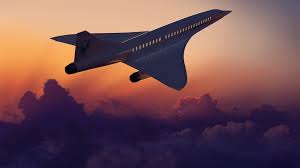
Breaking News
 Mike Rowe appears to be receiving flak for daring to explore the potential dangers of vaccines...
Mike Rowe appears to be receiving flak for daring to explore the potential dangers of vaccines...
 How to Keep Potatoes Fresh for a Year!
How to Keep Potatoes Fresh for a Year!
 A high school student has amazed the global science community with a discovery...
A high school student has amazed the global science community with a discovery...
Top Tech News
 The 6 Best LLM Tools To Run Models Locally
The 6 Best LLM Tools To Run Models Locally
 Testing My First Sodium-Ion Solar Battery
Testing My First Sodium-Ion Solar Battery
 A man once paralyzed from the waist down now stands on his own, not with machines or wires,...
A man once paralyzed from the waist down now stands on his own, not with machines or wires,...
 Review: Thumb-sized thermal camera turns your phone into a smart tool
Review: Thumb-sized thermal camera turns your phone into a smart tool
 Army To Bring Nuclear Microreactors To Its Bases By 2028
Army To Bring Nuclear Microreactors To Its Bases By 2028
 Nissan Says It's On Track For Solid-State Batteries That Double EV Range By 2028
Nissan Says It's On Track For Solid-State Batteries That Double EV Range By 2028
 Carbon based computers that run on iron
Carbon based computers that run on iron
 Russia flies strategic cruise missile propelled by a nuclear engine
Russia flies strategic cruise missile propelled by a nuclear engine
 100% Free AC & Heat from SOLAR! Airspool Mini Split AC from Santan Solar | Unboxing & Install
100% Free AC & Heat from SOLAR! Airspool Mini Split AC from Santan Solar | Unboxing & Install
 Engineers Discovered the Spectacular Secret to Making 17x Stronger Cement
Engineers Discovered the Spectacular Secret to Making 17x Stronger Cement
Supersonic travel is on the verge of a comeback--here's why

Flying faster than the speed of sound still sounds futuristic for regular people, more than 15 years after the last commercial supersonic flights ended. The planes that made those journeys, the 14 aircraft collectively known as the Concorde, flew from 1976 to 2003. It traveled three times faster than regular passenger aircraft, but the airlines that flew it couldn't make a profit on its trips.
The reason the Concorde was unprofitable was, in fact, a side effect of its speed. When the plane sped up past the speed of sound—about 760 mph—it created shock waves in the air that would hit the ground with a loud and sudden thud: a sonic "boom." It is so alarming for people on the ground that U.S. federal regulations ban all commercial aircraft from flying faster than the speed of sound over land.
Those rules, and the amount of fuel the plane could carry, effectively limited the Concorde to transatlantic flights. Operating the plane was still so expensive that a one-way ticket between London and New York could cost over $5,000. And the Concorde often flew with half its seats empty.
The main benefit of supersonic travel is the reduction in flight time. A three-hour flight across the Atlantic could make a day trip possible from the U.S. to London or Paris, essentially saving one whole work day.

 Wall Street wants to go 24/7
Wall Street wants to go 24/7

